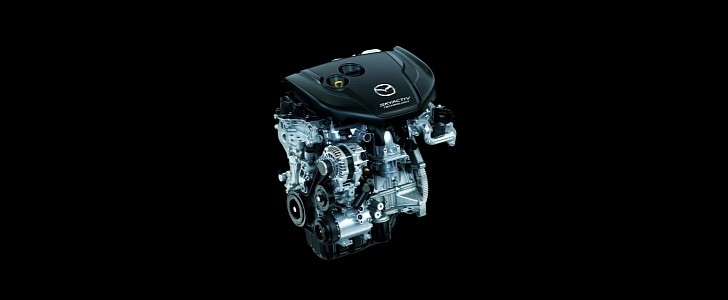Ever since the Dieselgate scandal that convinced Volkswagen to invest heavily into electrification, compression ignition is seen as some kind of Boogeyman of the automotive industry. The question is, have you tried imagining semis and other heavy haulers with gasoline engines, hybrid, or all-electric powertrains?
Not even the European Union did, which is slowly but steadily phasing out new passenger vehicles running on fossil fuel. However, there are automakers that can’t make a case for diesel any longer in this part of the world. Mazda, for example, is pulling the plug on the 6 sedan and wagon SkyActiv-D 2.2.
Autocar.co.uk doesn’t know if other models such as the CX-5 will follow suit, but the painting is on the wall if we take a moment to look at the CO2 emissions of a mild-hybrid gasoline powertrain versus a turbo diesel with similar displacement.
In the case of the Mazda3 hatchback, the SkyActiv-D 1.8 is WLTP-rated at 131 grams of CO2 per kilometer while the SkyActiv-G 2.0 M-Hybrid returns 116 grams. Level up to the SkyActiv-X engine, and you're looking at 103 grams.
The U.S. is different from Europe in terms of emissions regulations, though. A decade since we’ve been promised the SkyActiv-D 2.2 in this part of the world, Mazda has confirmed to Carscoops that the inevitable has happened.
Originally slated to arrive in 2013 (!!!) instead of 2020, the Mazda6 sedan with this engine has completed certification in the United States along with the CX-5 crossover. “More information will be released at the appropriate time,” said Mazda’s spokesman, but still, what can you expect from the optional mill?
Both nameplates are equipped with a twin-turbocharged mill, a sequential system that eliminates the tradeoffs between low-RPM response and high-RPM performance. A small and a large turbo promise up to 168 horsepower and 290 pound-feet (393 Nm), and Mazda designed the system for single turbo operation, both compressing in series, and both operating in parallel.
Autocar.co.uk doesn’t know if other models such as the CX-5 will follow suit, but the painting is on the wall if we take a moment to look at the CO2 emissions of a mild-hybrid gasoline powertrain versus a turbo diesel with similar displacement.
In the case of the Mazda3 hatchback, the SkyActiv-D 1.8 is WLTP-rated at 131 grams of CO2 per kilometer while the SkyActiv-G 2.0 M-Hybrid returns 116 grams. Level up to the SkyActiv-X engine, and you're looking at 103 grams.
The U.S. is different from Europe in terms of emissions regulations, though. A decade since we’ve been promised the SkyActiv-D 2.2 in this part of the world, Mazda has confirmed to Carscoops that the inevitable has happened.
Originally slated to arrive in 2013 (!!!) instead of 2020, the Mazda6 sedan with this engine has completed certification in the United States along with the CX-5 crossover. “More information will be released at the appropriate time,” said Mazda’s spokesman, but still, what can you expect from the optional mill?
Both nameplates are equipped with a twin-turbocharged mill, a sequential system that eliminates the tradeoffs between low-RPM response and high-RPM performance. A small and a large turbo promise up to 168 horsepower and 290 pound-feet (393 Nm), and Mazda designed the system for single turbo operation, both compressing in series, and both operating in parallel.
































